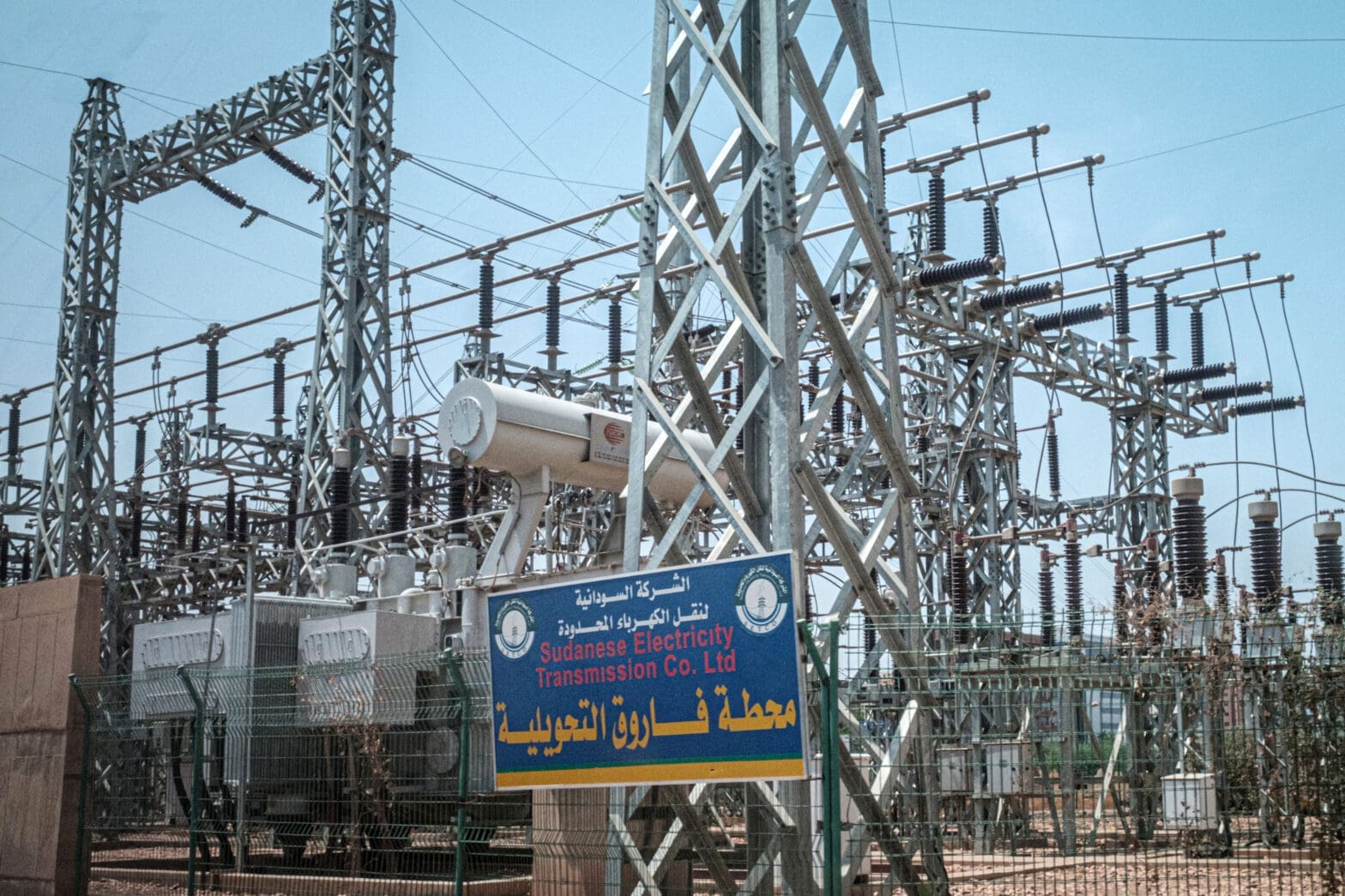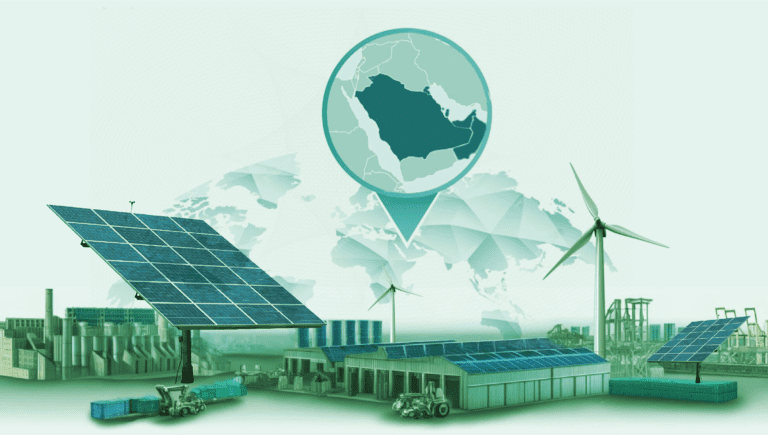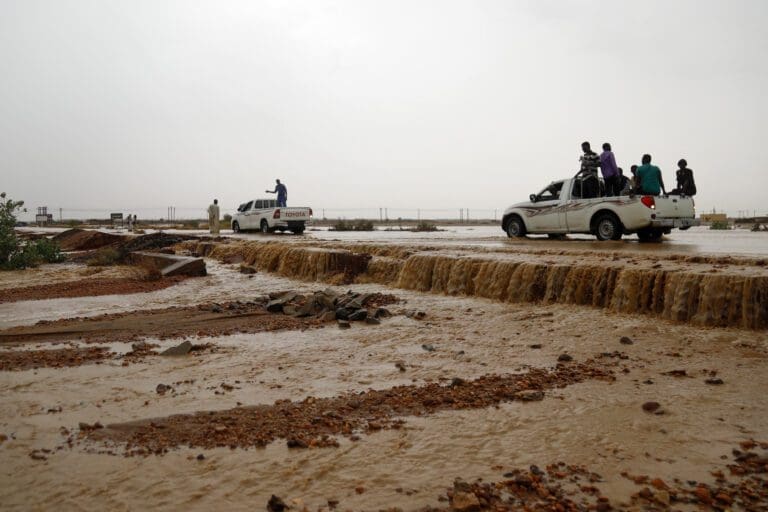
Rebuilding Sudan’s Energy Sector:
Pathways to Equitable Post-Conflict Recovery
Issue Brief, November 2025
Key Takeaways
Structural and Financial Issues Weigh Heavily on Sudan’s Energy Sector: The sector is structurally weak, highly centralized, and underfunded, with aging infrastructure and inefficient, state-dominated operations. Conflict has damaged key assets and prevented rebuilding.
Low Capacity is Obstructing Adoption of Renewables: Operational inefficiencies and a shortage of technical expertise are hindering uptake. Some solar projects exist, but suffer from grid instability, poor design, logistical barriers, a skills gap, and inadequate maintenance.
Supply Shortages Reflect the Urban-Rural Divide: Disparities in electricity supply between cities and remote areas reflect persistent political exclusion. Greater Khartoum benefits from nearly half the national electricity supply, while peripheral regions such as Darfur and Kordofan remain disconnected and marginalized.
Energy Poverty Drives Socioeconomic Inequality: Deprivation from energy has far-reaching economic, social, and gender impacts, limiting access to services and opportunities. A post-conflict National Energy Plan could help ensure equitable access, advance institutional reform, and support sustainable development nationwide.
Introduction
Repairing and rebuilding Sudan’s energy sector cannot take place while conflict continues, as ending the war is a fundamental condition for any real and sustainable reconstruction effort to begin. However, it is also important to start planning and preparing for reconstruction even while conflict wages on in order to be ready to take action once peace is restored. This is because rebuilding Sudan’s energy sector could serve as a key catalyst for returning displaced individuals and ensuring an equitable recovery.
Naturally, this will be a herculean task. Even before the outbreak of nationwide conflict in April 2023, Sudan’s power infrastructure was threadbare and marked by deep regional disparities. Approximately 60–70% of the population—mainly those in rural and conflict-affected areas—lacked access to electricity, while Khartoum and a few central regions experienced frequent blackouts despite receiving most of the supply.1 These disparities are rooted in longstanding development gaps and a history of consolidated governance and regional marginalization. As of 2022, Sudan’s electricity consumption stood at just 0.294 megawatt-hours (MWh) per capita—less than one tenth of the global average.2
The situation has since deteriorated, as fighting devastated critical infrastructure. Attacks by the Rapid Support Forces (RSF) have crippled power plants, transformers, transmission lines, and fuel depots.3 The war compounded these challenges by triggering mass displacement to remote cities and rural areas, where infrastructure is weaker and the primary energy source is biomass fuels.4 As of 2025, up to 40% of Sudan’s energy generation capacity had been lost due to the conflict, plunging millions into darkness and disrupting essential services.5
Today, Sudan’s transitional authorities face the immense tasks of ending the conflict, restoring essential services, and enabling inclusive national development once peace is secured—an effort the government estimates could require up to $1 trillion nationwide.6 The energy sector will be central to Sudan’s reconstruction and development strategy, serving as the backbone for economic recovery, job creation, public services, climate resilience, and social cohesion. Reliable energy is essential for industry, agriculture, healthcare, education, and small businesses. However, without fundamentally transforming the sector, Sudan may not be able to boost productivity, attract investment, or deliver essential services. This issue brief examines the reconstruction of the energy sector, analyzes the challenges and suggests potential reforms. It emphasizes institutional, decentralized energy solutions and inclusive strategies to ensure a resilient and equitable future.
Structural Fragility and Governance Failures
Sudan’s electricity sector was once a regional leader, starting with the installation of the first generator in Khartoum in 1908.7 However, political and economic instability had prompted many Sudanese engineers and technicians to emigrate to the Gulf and beyond in search of better economic opportunities.8 As a result of the political situation and the associated brain drain, progress on Sudan’s infrastructure stalled, a process exacerbated by chronic underinvestment and management challenges.
The country has an installed generation capacity of 4.5 gigawatts (GW), and on the eve of the ongoing war, only 62% of the population had access to electricity at all—primarily those living in urban areas—but even they face regular blackouts.9 The sector’s challenges are rooted in a fragile supply mix. About 60% of the country’s energy comes from hydropower and the rest from thermal oil-fired plants—both of which are vulnerable to external shocks. Renewables constitute a meagre 1% of the power mix.10 Hydropower faces frequent reductions due to sedimentation and seasonal droughts, while thermal plants have experienced fuel shortages and operational inefficiencies, particularly since South Sudan’s secession in 2011, which resulted in Sudan losing most of its oil assets and increasingly relying on costly fuel imports.11
Source: U.S. Energy Information Administration, “Sudan: Overview,” accessed March 20, 2024, https://www.eia.gov/international/analysis/country/sdn.
Compounding these challenges, the sector has suffered chronic underinvestment due to heavy debt and years of international sanctions, leaving it reliant on fragile infrastructure and costly fuel imports.12 This vulnerability has been exacerbated by macroeconomic instability, market barriers, and the political disruptions of the 2021 coup and 2023 war,13 which halted donor support. Funding gaps, currency shortages, fuel shortages, and a lack of spare parts frequently delay project implementation.
Amid these challenges, Sudan’s utilities remain financially unsustainable, with low tariffs covering only a fraction of actual costs and deterring private investment, thereby increasing dependence on public subsidies. Despite tariff adjustments as part of the government’s fossil fuel subsidy reforms since 2021, electricity bills remain far below real generation costs.14 These heavily subsidized rates do not reflect the actual costs of electricity production, particularly given the challenges outlined above.15 While tariffs below the rates needed for cost recovery are generally considered distortionary, in Sudan, income constraints—particularly during the conflict—have meant market rates would be unaffordable to most Sudanese.
These issues are further compounded by the centralization of Sudan’s energy governance. The sector operates as a state monopoly, with the Sudan Electricity Holding Company overseeing all generation, transmission, and distribution.16 Governance is further undermined by the absence of a clear legal and regulatory framework, particularly for Public-Private Partnerships (PPPs) and Power Purchase Agreements (PPAs).17 Regulatory fragmentation among key bodies, including the Directorate of Renewable Energy, the Sudanese Hydro Generation Company, and the Sudanese Electricity Distribution Company, has resulted in overlapping mandates and inconsistent planning, impeding policy coherence and slowing the adoption of renewables.
Indeed, the war has sharply exposed the sector’s vulnerabilities. Heavy centralization has rendered the grid highly susceptible to disruption, allowing attacks on electricity infrastructure to plunge vast areas into darkness, escalating insecurity and humanitarian risks. While some communities, often with support from some organizations, have increasingly turned to solar solutions, these efforts have largely bypassed low-income households and remain far too limited to provide meaningful off-grid access.
Uneven Electrification and the Structural Roots of Exclusion
Sudan’s electricity sector also faces deep-seated operational constraints that undermine grid reliability and exacerbate existing inequalities. Persistent voltage fluctuations, aging infrastructure, and outdated operations hinder both domestic efficiency and cross-border energy integration—particularly with neighboring Ethiopia. These technical deficits also obstruct meaningful adoption of renewable energy and result in chronically low system performance. A severe shortage of skilled personnel exacerbates the situation; many qualified engineers and technicians have emigrated, while insecurity and inadequate transportation infrastructure hinder maintenance and repair, especially in remote or conflict-affected regions.
These conditions even impede newly built facilities. For instance, a utility-scale solar plant in Darfur has significantly underperformed due to technical grid losses and unstable infrastructure. While Sudan’s electrification rate stood at approximately 32% in 2018, this national figure masked stark regional disparities.18 Just 2.2 million out of 6.7 million households were connected to the grid, with the residential sector accounting for 60% of total consumption.19 In contrast, the agricultural and forestry sectors—the backbone of rural livelihoods—received only 8%, underscoring the disconnect between supply and development priorities.20
Sources: International Energy Agency, “Sudan: Electricity,” accessed June 10, 2025, https://www.iea.org/countries/sudan/electricity#how-is-electricity-used-in-sudan.
This has serious social and environmental repercussions. Rural communities’ reliance on biomass fuels such as firewood and charcoal accelerates deforestation and contributes to indoor air pollution.21 The lack of electricity cripples public services: clinics are unable to provide emergency care, and schools operate without the lighting and digital tools essential for modern education. These disparities reflect decades of centralized planning that has consistently privileged urban centers while neglecting the development needs of rural and marginalized populations. The absence of a centralized, real-time energy information system further compounds these challenges, resulting in poor planning, misallocated investments, and ad hoc responses to structural issues.
Political Exclusion and Rural Energy Poverty
Sudan’s persistent energy inequality is deeply embedded in a broader architecture of political and economic exclusion.22 The electricity poverty of peripheral regions such as Darfur, Kordofan, and the eastern states, despite their substantial populations and contributions to agricultural GDP, is not incidental. It reflects long-standing governance patterns in which infrastructure investment is deployed as a political tool rather than for equitable development.
From the colonial period to the present, successive regimes have prioritized energy infrastructure in areas of political loyalty or economic visibility, often sidelining regions with weaker representation. Large-scale energy projects such as the Merowe and Roseires dams were championed as symbols of national modernization, but delivered limited benefits to rural communities,23 many of which lie near major power sources but remain off-grid. Even the 2011 Doha Document for Peace in Darfur (DDPD), which recognized the importance of infrastructure in post-conflict recovery, struggled to deliver meaningful progress.24 Its solar electrification commitments, targeting 70 villages with community-scale PV systems, faced challenges ranging from technical failures and fuel shortages to weak institutional support and insufficient community training, leaving its developmental objectives largely unmet.25
Source: Africa Energy Portal, “Sudan: Profile,” accessed June 20, 2025, https://africa-energy-portal.org/aep/country/sudan; World Bank Group, “Sudan: Population,” accessed July 2025, https://data.worldbank.org/indicator/SP.RUR.TOTL?end=2024&locations=SD&start=1960&view=chart.
These structural imbalances extend beyond access. Rural populations often rely on informal, decentralized energy sources—diesel generators, small solar kits, or biomass generators—which are costly, unreliable, and insufficient for productive use.26 Without grid access, farmers lack electric irrigation, agro-processing facilities, and cold storage. Small businesses operate under restrictive conditions, unable to power basic machinery or extend their working hours. Public institutions such as clinics and schools often operate without stable electricity, which undermines basic service delivery and weakens state legitimacy. In conflict-affected zones like Darfur and South Kordofan, the absence of electricity is not only a material hardship—it is a daily reminder of their exclusion from the national development agenda.
This is compounded by institutional fragmentation and policy incoherence. Rural energy initiatives have often been implemented as short-term donor-backed projects, without being anchored in a unified national strategy or robust local planning structures.27 Solar mini-grids, hybrid systems, and solar irrigation schemes, despite their potential, have remained isolated and unscalable due to high upfront costs, inadequate financing mechanisms, and limited technical capacity. The hybrid photovoltaic-diesel plant in El-Fasher, for example, has underperformed due to fuel supply disruptions, poor integration with the local grid, and inadequate maintenance. Similar projects in Nyala and Zalingei have faced equipment theft, system breakdowns, and limited community buy-in, symptomatic of a broader failure to build local ownership and institutional resilience.
The gendered dimensions of energy poverty in rural Sudan are particularly stark. The lack of modern energy disproportionately burdens women and girls. Daily collection of wood and water, for cooking on polluting stoves, consumes hours of unpaid labor, while exposing them to health risks and physical danger. These responsibilities restrict girls’ education, reduce women’s participation in income-generating activities, and reinforce intergenerational cycles of deprivation. Yet energy planning in Sudan has rarely adopted gender-sensitive frameworks, missing an opportunity to link energy access with broader goals of social equity and women’s empowerment.
The consequences of this exclusionary model are multidimensional. Energy scarcity reinforces underdevelopment, fuels grievances in conflict-affected areas, and undermines trust in national institutions. Promises in peace agreements to expand infrastructure often go unfulfilled, perpetuating distrust and instability. Moreover, the urban areas’ disproportionate access to both electricity and the benefits of subsidies further entrenches spatial inequality.
Addressing rural energy poverty thus requires more than technical fixes or donor interventions. It demands a fundamental shift in how energy is conceived within Sudan’s development strategy. Energy must be reframed not merely as a sectoral concern but as a cornerstone of inclusive economic recovery, political reconciliation, and social transformation. Bridging the urban-rural divide in electricity access is crucial to breaking entrenched patterns of marginalization, enhancing livelihoods, and fulfilling the promises of equitable development in post-conflict Sudan.
The Need for Equitable Energy
The promise of decentralized energy in Sudan depends on strong policy commitment, active community participation, and sustained institutional support. Sudan’s vast geography, low population density, and abundant solar resources make centralized grid expansion costly and impractical. Off-grid solar offers a flexible and affordable alternative for the most underserved communities. Solar systems for schools, clinics, and water pumps have already improved essential services and strengthened community resilience. However, to scale these successes, such programs must prioritize local ownership, inclusive planning, and gender integration.
Financial innovations such as results-based financing, microloans, and targeted subsidies are also necessary to make electricity affordable. Partnerships with local businesses and cooperatives could ensure effective delivery and maintenance. However, in post-conflict Sudan, rebuilding the energy sector will require a comprehensive national roadmap—one that addresses legal reform, institutional restructuring, investment in decentralized renewables, restoring critical infrastructure, financial innovation, capacity building, and inclusive planning. Such a roadmap should emphasize the following priorities:
- Building a Reliable Database
Sudan relies on four major power plants: Umm Dabakir and El Jaili for thermal generation, and Merowe and Roseires for hydroelectric power. These facilities form the backbone of the national grid and are essential for meeting demand and ensuring system stability. For post-war recovery, the immediate focus should be on restoring the grid, particularly in major urban and industrial centers. This involves the rapid assessment and repair of damaged infrastructure, the reactivation of key power plants, and the restoration of transmission lines. Expanding regional interconnections with Egypt and Ethiopia through ongoing negotiations and new agreements could strengthen supply security and support economic recovery. However, restoring the previous network without addressing its structural flaws would perpetuate inefficiencies and risks.
A successful and sustainable recovery will require not only infrastructure repair but also modernization, including smart substations and real-time monitoring systems, a process informed by reliable, comprehensive energy data. Due to the power sector’s prepayment billing structure, the Sudanese Electricity Holding Company (of which the distribution grid is a wholly owned subsidiary) has an extensive database on grid consumers, with geospatial information and sectoral disaggregation. This data could be used to support planning, resource allocation, and investment decisions. Investing in a more comprehensive understanding of the sector—such as community-level assessments, consumption decisions, and the impact of power outages—while making the data available to investors, policymakers, and researchers, would support the rebuilding process. A transparent, open-access energy database would enable policymakers and investors to make evidence-based decisions, target interventions where they are most needed, and ensure that recovery efforts are equitable and effective across Sudan.
- Institutional Reform and Capacity Building
Another priority is that of restructuring the institutions governing the energy sector. Decades of conflict have eroded the capacity of ministries and utilities. Establishing an Energy Reconstruction Commission under the Prime Minister’s office could ensure coordinated policy planning and the involvement of stakeholders, including marginalized regional voices. Clarifying the roles of generation, transmission, and distribution entities is essential. While transmission could remain centrally managed for efficiency, generation could include a blend of national and independent producers, particularly of renewables. Decentralized distribution could improve service delivery. An independent energy regulator empowered to manage tariffs and service standards would ensure financial sustainability and protect consumers.
Restoring human capital in the energy sector is equally critical. During the war, utilities lost not only physical assets but also human capital and institutional memory. Reconstituting capable public utilities will demand a national effort to recruit, retrain, and retain technical personnel, especially in system operations, procurement, and maintenance. Training new technicians, engineers, and managers through university partnerships and international programs could address skill deficits. Rebuilding trust in public utilities will also hinge on re-establishing accountability. Transparent procurement, depoliticized staffing, and independent auditing must become non-negotiable elements of the reconstruction agenda.
- Becoming Diversified, Resilient, and Decentralized
Sudan’s energy transition necessitates a strategic reorientation to significantly reduce dependence on hydropower and imported thermal fuels, both of which have proven economically and environmentally unsustainable. Hydropower’s reliability is increasingly undermined by erratic climate conditions, while annual fuel imports of $1.3 billion intensify fiscal strain and expose Sudan to external market risks. In contrast, the country’s high solar potential, combined with sharply declining projected solar costs (to $35/MWh by 2025 and $25/MWh by 2035), presents a compelling opportunity to diversify energy sources and stabilize the electricity supply.28
A credible strategy should prioritize the rapid deployment of distributed solar generation, particularly in areas near demand centers and underserved regions. Redirecting fossil fuel expenditures to fund up to 600 MW of new solar capacity would not only reduce reliance on imports but also enhance the resilience of the grid, provided projects are geographically dispersed. Regulatory clarity, targeted incentives, and strengthened banking instruments could unlock private and public investment for both grid-connected and off-grid solutions.29
Decentralization is key to this transition. Granting greater fiscal and project autonomy to local governments would enable tailored electrification strategies and support the deployment of mini-grids and community solar systems. For remote and conflict-affected areas, decentralized renewable solutions offer a cost-effective and resilient alternative to centralized infrastructure, thereby reducing systemic vulnerability to shocks and outages. This approach would require coherent national frameworks, streamlined regulations, and support for local capacity-building. Financial mechanisms such as subsidies, microloans, and results-based financing could further drive uptake and ensure economic inclusion.
- Financing Mechanisms for Equitable Recovery
Substantial financial investment will be critical for Sudan’s energy recovery. A realistic Integrated Energy Strategy, focusing on expanding electricity access, integrating renewable energy, and enhancing climate resilience, is also crucial. To implement such a plan, Sudan must attract grants and concessional loans from international donors, institutions, and through strategic bilateral partnerships. Packaging energy projects within broader reconstruction and climate resilience programs could leverage global climate funding opportunities. Donor coordination and transparent governance structures will be crucial to securing and effectively utilizing these resources.
Public-private partnerships (PPPs) could further mobilize private investment, especially for renewable energy projects such as solar and wind farms. Strengthening regulatory frameworks, offering risk guarantees, and ensuring viable financial arrangements for power purchase agreements could all encourage investor confidence. Transparent and competitive bidding processes must safeguard against corruption and ensure equitable distribution of services.
Addressing sector-wide financial sustainability is imperative. Introducing targeted subsidies and cost-reflective tariffs could strike a balance between financial viability and affordability, complemented by improved revenue collection and loss-reduction strategies. Grassroots financing mechanisms, including microfinance loans for solar systems, community investment models, and diaspora bonds, could empower consumers and effectively leverage resources from Sudan’s diaspora.
- Promoting Gender-Sensitive Energy Access
Gender-sensitive strategies are critical for equitable energy recovery in Sudan. Women and the youth, who are disproportionately affected by energy poverty, must be central to policy and project design. Expanding access to improved cookstoves and electrifying community infrastructure could significantly reduce the daily labor and health risks faced by women. Solar-powered clinics, maternity centers, and schools could improve women’s social and economic opportunities.
Promoting economic participation by women and the youth, through targeted training for solar technicians and support for female-led energy enterprises, could transform livelihoods, especially for female-headed households. Including women in governance structures, from local committees to national planning bodies, would ensure that their needs and perspectives inform decisions. Collecting sex-disaggregated data would enable effective monitoring and support gender-equitable outcomes. Targeted subsidies and community awareness campaigns could further enhance the impact of energy interventions, making women key participants in and beneficiaries from Sudan’s energy recovery efforts.
A New National Energy Plan
The catastrophic war has severely damaged Sudan’s energy infrastructure. Yet this catastrophe presents a unique opportunity to rethink the country’s energy future and its crucial role in the rebuilding process. Without reliable, affordable, and equitable access to electricity, there can be no real progress toward revitalizing agriculture, attracting industry, restoring health and education services, or creating jobs. Energy is not merely an infrastructure concern: it is the backbone that supports every facet of Sudan’s development aspirations and underpins long-term peace and stability.
Yet rebuilding this sector must start with a clear-eyed understanding of the current landscape. A first step is to undertake a comprehensive nationwide assessment of Sudan’s energy assets, systems, and needs. This means gathering up-to-date data on infrastructure conditions, service coverage, consumption patterns, technical losses, and local environmental impacts. Without such evidence, decisions risk repeating past failures: misallocating resources, overlooking critical gaps, or reinforcing existing inequalities.
On this foundation, Sudan could craft a new National Energy Plan that realistically navigates its constraints: overwhelming debt, limited fiscal space, strained relations with international financial bodies, and fragile institutions. At the same time, the plan must directly address urgent local environmental pressures—deforestation resulting from widespread fuelwood use, desertification, and growing water scarcity—which threaten livelihoods and food security.
Such a plan should unify fragmented oversight, enact long-overdue legislation, and restore investor confidence through transparent, accountable governance. Redirecting even part of Sudan’s heavy fuel import spending toward resilient solutions, such as decentralized solar and mini-grid systems, could ease foreign exchange strains, create rural jobs, and slow environmental degradation, thereby bolstering Sudan’s Nationally Determined Contribution (NDC) to the Paris Agreement. Paired with targeted banking programs, local training initiatives, and gender-responsive strategies, this approach could make clean energy both accessible and sustainable, thereby easing the burdens that disproportionately fall on women and marginalized communities.
That said, energy sector reconstruction must be pursued not only as a technical or climate priority, but as a pragmatic economic and social necessity. By embedding energy at the heart of its reconstruction agenda, informed by rigorous assessment and anchored in Sudan’s real constraints, the country could begin to turn a long-standing vulnerability into a driver of inclusive growth, resilience, and national renewal.
Conclusion: Towards an Equitable, Sustainable Energy Future
Sudan’s energy woes are not merely a consequence of infrastructure breakdown, they are a mirror of broader governance and developmental failures. Hence, these challenges will not be resolved through piecemeal reforms or donor-funded projects alone. Instead, reforming the energy sector is essential for rebuilding the social contract, reducing inequality, and laying the foundation for a more resilient and inclusive post-conflict recovery process that eludes the country. The journey to rebuild the energy sector transcends infrastructure: it is fundamentally about rebuilding society on the principles of equity, resilience, and shared prosperity.
Despite considerable physical, financial, and institutional challenges, Sudan’s abundant renewable resources and resilient human capital offer substantial opportunities. Establishing a national energy task force, restoring critical infrastructure, rapidly deploying solar solutions to strategic locations, and restructuring energy institutions are all essential steps in the immediate term. Looking ahead, securing international financing through donor coordination and transparent governance, combined with robust public-private partnerships, will bolster long-term recovery efforts.
Sudan’s energy transformation must be approached not as a standalone technical upgrade, but as the linchpin of an inclusive recovery. Energy is the sector that enables every other sector—agriculture, manufacturing, health, education, and digital services—to function and grow. By placing energy transformation at the heart of national planning, Sudan can begin to bridge deep historical inequalities, build climate and economic resilience, and lay the groundwork for a more peaceful, just, and prosperous future. Equitable outcomes require local empowerment, preventing corruption, and deliberate efforts at gender inclusivity. Through decentralized energy systems and community involvement, Sudan can achieve widespread energy access and economic development, transforming the energy sector into a unifying force for national integration and sustainable growth.




